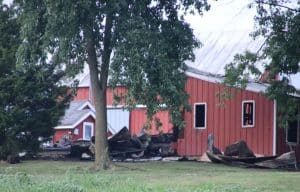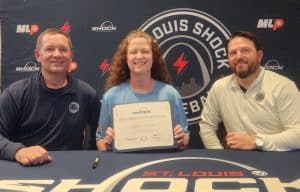Roider found not guilty
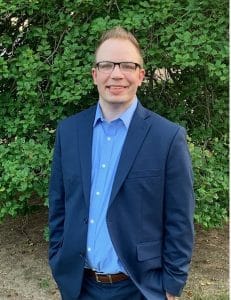
After a week of trial proceedings and approximately 2.5 years in jail, Kyle M. Roider walked out of the Monroe County Courthouse early Friday evening a free man.
Roider, 33, was charged with first-degree murder and aggravated battery with a firearm in connection of the January 2019 death of 35-year-old Steven Becker in Waterloo.
Roider was charged shortly after Becker’s body was found in the basement of Roider’s house at the time, 107 N. Church Street.
On Friday, the jury found Roider not guilty of both charges. Read about reactions to the verdict by clicking here.
This announcement came among a crowded gallery. Becker’s family clutched each other’s hands on one side of the front row and Roider’s parents, sister and brother-in-law occupied the other. While only a few feet separated the two families, the impact the verdict has on their lives could not be any more different.
Monroe County State’s Attorney Lucas Liefer spearheaded the prosecution and T.J. Matthes of St. Louis firm Rosenblum, Schwartz & Fry, P.C. led the defense.
After Becker’s death, then-state’s attorney Chris Hitzemann filed the charges against Roider. He now serves as the resident Monroe County judge on the 20th Judicial Circuit Court but sits in St. Clair as he cannot judge cases he filed as state’s attorney.
While the Republic-Times was barred from the jury selection process, the press was able to get inside the courtroom once opening statements kicked off Wednesday.
Here is what was heard and seen:
Opening statements

The prosecution and defense both recognized Becker’s death date as Jan. 9, 2019, and his body’s discovery date as Jan. 11, 2019. However, while the prosecution painted it as a slaying worthy of a first degree murder conviction, the defense told a tale of self-survival.
Liefer introduced the jury to some main characters: Roider, Becker, Jennifer McClure and Tesa Guetterman. Of these four, only two would be heard from during the trial. In fact, Liefer divulged in his opening statement that McClure, a mutual friend of Roider and Becker, would be one of the first witnesses.
Liefer told jurors that by the time all evidence would be presented, the jury would not be deciding whether Roider did the crimes, but if there was “some sort of justification” for the offenses.
The timeline is so exact, Liefer said, due to a Harrisonville Telephone Company surveillance camera conveniently located right across the street from Roider’s residence at the time.
Video footage, which would later be played in court, shows the front door and garage of the house.
The estimated time of Becker’s death was consistent in both prosecution and defense accounts: during a window of time after two of Roider’s friends – one being McClure – left Roider’s house while Becker stayed, and before Roider went to McClure’s residence in Millstadt on Jan. 9, 2019.
Liefer discussed the two gunshot wounds Becker sustained: one on the upper leg/groin area and one to the head.
Matthes did not dispute the existence of these two wounds in his opening statement, but told jurors Roider acted in self-defense. Without using those exact words, Matthes said Becker had threatened Roider and possessed a knife. Matthes said that at the time of the alleged murder, Becker was “uncontrollable” and in the process of a drug “binge.”
“At that time, Kyle chose to stay alive,” Matthes told the court.
Matthes also detailed how Roider felt in the hours and days after the shooting, emphasizing he “didn’t try to hide anything,” although he did not tell friends and family what had occurred.
After Roider arrived at McClure’s house in Millstadt hours after Becker’s death, he stayed there for a couple of days until she “confronted” him on Jan. 11, at which point he was “incoherent,” Matthes said to the jury.
Earlier in his opening statement, Matthes explained that Roider had left his schizophrenia medication at his residence and did not consume it while staying with McClure.
Roider appeared calm throughout opening statements and the rest of trial proceedings. He greeted family and friends who sat intently in the gallery with a smile, looking excited to see so many people he knew. At the end of the proceedings, he also bid farewell to loved ones.
McClure testifies
The court had a packed day last Wednesday, as the prosecution called a total of six witnesses to the stand.
First was Claudine Becker, Steven Becker’s mother, who identified her son via a picture Liefer showed her. She then explained that because her son’s car was stolen, he was borrowing hers at the time of his death. She said knew something was wrong when her son did not answer any phone calls. That’s when she filed a missing person’s report.
The witnesses who generated perhaps the most questions from the prosecution during the first day of proceedings were McClure and Joshua Easton, a crime scene investigator with Illinois State Police.
Liefer asked McClure about her relationship with the defendant and Becker. McClure testified that she and Roider had known each other in high school and had reconnected in 2018. They had then been intimate for several months before Becker’s shooting death.
McClure told the court she knew Becker pretty well too, as he was her son’s father’s best friend.
McClure and her friend, Guetterman had been spending time with Roider and Becker in the days leading up to Becker’s death.
In the early hours of Jan. 8, 2019, McClure and Becker traveled to Cahokia to purchase methamphetamine. Later, McClure, Guetterman and Becker all went to Roider’s house.
All four were using methamphetamine that night in Roider’s basement, McClure said.
Eventually, McClure and Guetterman left and Becker stayed at Roider’s house. In his testimony, Roider said he had slept upstairs while Becker remained in the basement. McClure shared at around 4 p.m. Jan. 8, she and Guetterman returned to Roider’s to pick up Becker.
The three later came back to Roider’s early on Jan. 9, and once again Becker stayed the night when the other two left, which Roider corroborated in his testimony.
Cross examination revealed at approximately 1:40 a.m. on Jan. 9, 2019, McClure messaged her friend Jess Ahne on Facebook. She made a comment to Ahne insinuating Becker was, in Matthes’s words “driving (her) crazy,” hoping to corroborate the defense theory that Becker was in a drug-induced state of aggression at the time of his death.
McClure said that around 4 a.m. Jan. 9, Roider talked about coming to her residence. According to her testimony, she asked Roider during this discussion if he was coming by himself, as she knew Becker may still be at Roider’s house, to which Roider replied yes.
Roider ended up not coming over that morning, McClure said, but went to McClure’s residence later that day. He then spent the night with McClure and stayed at her house on Thursday and Friday as well.
On Jan. 11, which was a Friday, McClure said she appeared in court in St. Clair County on drug-related charges. At this time, she received several texts from people concerned about Becker. Ahne also informed McClure that Becker’s mother had filed a missing person’s report.
McClure, after returning home, asked Roider if he knew Becker’s whereabouts.
Roider then told her that Becker had been talking about past incidents and was talking in a way she could not understand, but knew he had said something about a knife, a gun and that Roider said he had hurt Becker.
In cross examination, Matthes described this exchange as a “puzzle” McClure was left to piece together. He also asked McClure if she understood Roider’s recounting of the situation to have meant he was acting in self-defense, to which she said “yes,” and if the police had ever asked her if it was possible Roider was defending himself.
She said this was never asked in multiple investigative interviews.
McClure told Roider she wanted to see for herself if Becker was OK. Roider gave her his house key and truck key, since her car was broken. He warned her she would “not like the smell” and asked if she would “come back and give (him) a hug and a kiss” before calling anyone, she testified.
McClure met a friend outside Roider’s residence and the two went inside, where she discovered Becker’s body in the basement and called 911. Roider was arrested and charged shortly after.
Crime scene details
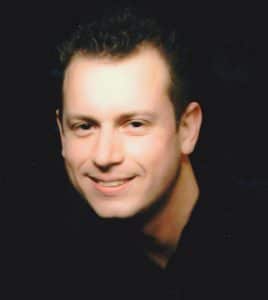
Easton, the final witness last Wednesday, arrived at the crime scene the night of Jan. 11, 2019. Liefer asked him many questions about his qualifications – including extensive training he has gone through and the nine years he has worked with ISP.
Photographs taken of the crime scene and the several pieces of evidence the state entered were shown and examined before the jury. Easton narrated the slide show, explaining a “red, blood-like substance” was found in three main places: around Becker’s head wound, on other parts of the rug his body was partially on, and on a TV stand.
The blood around his head was dry and “flaking,” Easton testified, indicating it had been there for some time.
As photo evidence showed, Becker’s fingernails were discolored in a grey-blue hue.
The state entered two 9 mm discharge cartridges found at the scene into evidence – along with what is believed to be the corresponding gun – which was found in a drawer upstairs. Earlier, Matthew Liefer (no known relation to the prosecutor) – a paramedic who responded to the scene – had mentioned the shell casings.
The gun was found upstairs in Roider’s bedroom. A fired projectile “core” was also found by investigators on the floor.
According to Easton’s testimony, another projectile was found lodged into a chair, which Lucas Liefer said in his opening statement was where Becker was shot in the leg. The actual chair from that day was brought before the jury so Easton could demonstrate the process by which he determined the approximate projectile.
He used a protractor and trajectory rod to come to his conclusion, Easton explained.
Both the projectile found in the chair and the chair itself were entered into evidence, along with a hard case which contained a lock and magazine.
Matthes pointed to a red object in one of the pictures that investigators had taken, which Easton identified as a knife sharpener. In his opening statement, Matthes described Becker had “aggressively” sharpened a knife in front of Roider at one point in their final encounter.
Easton said neither he nor anybody else at the scene had noticed the sharpener. He did note, however, that there were no signs of forced entry.
Others called to the witness stand last Wednesday to help in establishing a time line and crime scene findings were Jeff Prosise of the Waterloo Police Department and Justin Biggs of the Monroe County Sheriff’s Department.
More science
Thursday’s proceedings were marked by expert analysis.
Ann Rudloff, Monroe County deputy coroner, further confirmed Becker had suffered two gunshot wounds. Because the coroners are not allowed to undress the body at the scene, it was not noted right away the “not significant” amount of blood on Becker’s pants was a gunshot wound. After rolling Becker’s body over, a larger amount of blood on the backside of his legs was revealed.
A large pool of blood surrounded Becker’s head. Because Becker’s corpse lay on the floor for multiple days, the drying blood caused his head to stick to the floor. She also testified the knife found in Becker’s front pocket was in its sheath.
Dr. Kamal Sabharwal, a medical examiner, then testified. He revealed during cross examination that the first gunshot to Becker’s leg may not have caused him to be immobile, but the head shot would have incapacitated him.
Along with pictures put on the screen by Liefer, Sabharwal described to the jury the fatal gunshot to the head. As pictures and narration showed, this gunshot left an entry wound on the left side of Becker’s face and an exit wound in the back of his head. Because the wound in the back of Becker’s head did not have any abrasion, Sabharwal concluded it was an exit wound, he told the jury.
Sabharwal introduced a new buzzword to the jury: “stippling.” This is gunpowder residue burnt into the skin, seen in gunshot wounds where the victim is in close range to the weapon. He told the jury that stippling does, in part, rely on the specific firearm, but one can typically see it when the gun was up to 2-4 feet away from the flesh.
During cross examination, Sabharwal said the stippling seen with the head wound led him to believe the gun was level with Becker’s head. At this point, Matthes told the court Becker and Roider, who he had stand up from his seat in the courtroom, were just one inch apart in height.
Matthes used the proposed angle of the shot, along with it being close range, to support his assertion that Becker was threatening Roider while sitting in a chair sharpening a knife, at which point Roider shot his leg. When Becker charged at Roider, he fired the fatal shot in self-defense.
Becker’s leg wound did not show stippling, and Sabharwal testified one could not determine Becker’s position when he was shot in the leg.
The toxicology report showed Becker had methamphetamine, cocaine and marijuana in his system at the time of death.
Sabharwal said these drugs and their combination can impact people in different ways, yet said “it is possible” when Matthes asked if they could make Becker unstable or “blood-thirsty.”
Sabharwal gave the same response when the defense asked if the combination of substances could produce a compound effect.
Next, Nicholas Jones, a firearms examiner with the Illinois State Police Forensic Science Lab, took the stand. He said it was his expert opinion that firearms casings found at the scene corresponded with the Smith & Wesson pistol found in Roider’s drawer upstairs.
The conclusions of witnesses Keia Tate, a forensic biologist with the Illinois State Police, and Meredith Misker from the Illinois State Police Forensics Science Lab, worked hand-in-hand. Tate determined the red blood-like substance on the TV stand was in fact blood. She then sent swabs of this substance to Misker’s lab for DNA analysis.
In two separate reports, Misker’s testing determined the swab from the projectile showed Becker can be included as a “contributor,” but Roider’s DNA was excluded. The DNA analysis from the TV stand included Becker as a contributor and excluded Roider.
Essentially, there is a high probability Becker’s DNA is on the projectile and it’s his blood on the TV stand.
Tech talk
Testimony on Thursday from Waterloo police detective Eric Zaber, who is still on the force as a sergeant, and Brian Koberna, who has been in charge of the Madison County forensic lab for two years now, showed the jury how technology could play into their verdict.
Zaber responded to a medical call on Jan. 11, 2019. When he arrived on the scene, he was informed Becker’s body was in the basement. He conducted a sweep of the house and later collected the phones of Roider, Becker, McClure and Guetterman.
Roider, and his phone, were found at McClure’s house, Zaber said. What was missing, however, was Roider’s schizophrenia medication, the cross-examination revealed.
Koberna then extracted data from Becker’s and Roider’s phones. He testified he could only do a logical extraction from Becker’s phone – meaning the data he could extract and parce was limited. Data from Jan 9, 2019, when the offenses allegedly took place, only showed incoming calls and corresponding phone numbers.
Under questioning from the prosecution, Koberna said the fact there were missing entries showed some data was deleted, but there was no way of knowing who erased the data, which included texts between Becker and his daughter.
Waterloo police – Koberna said he believed with the help of the FBI – obtained a physical extraction of data from Roider’s phone. This is essentially the best case scenario for investigators, as this type of extraction even contains deleted data.
Liefer entered every record of every cellular communication made on Roider’s phone in the time frame from the day of the alleged offense to the day Becker’s body was discovered into evidence.
A Facebook post mentioned in court the previous day – which Matthes said Roider made after the murder while trying “to clear his head” – was shown on the screen for jurors to view. The quote read, “Before action one must understand the cause, because without true understanding there is no real meaning. Understanding is true knowledge.”
This post was an image of the quote, Koberna confirmed.
As Thursday’s proceedings came to an rest, so did the state’s case. Matthes patted Roider on the back before the jury was dismissed, perhaps foreshadowing the trial’s favorable outcome for his client.
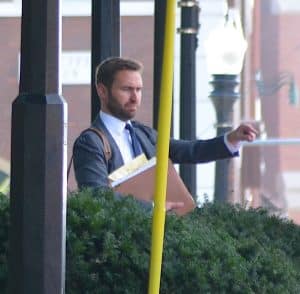
Roider takes the stand
Friday was the final day of the trial and began with Roider taking the stand as the defense’s first – and only – witness.
Matthes told the Republic-Times after the trial that this was of utmost importance.
“He wanted to get up there and tell the jurors what happened, and he had always wanted to do that from day one. From day one, he was saying this was self defense,” Matthes said about the decision to have Roider testify. “The other thing is, nobody was in that basement besides Kyle and Steve Becker, and so he had to give some context to the evidence that was found at the scene. His story did just that, because his story was corroborated by what was at the scene.”
Matthes began questioning his witness by asking for a detailed account of the hours before he shot Becker, first in the leg and then in the head.
Roider told the jury that McClure, Guetterman and Becker used meth in his basement in the late hours of Jan. 8 into early morning hours of Jan. 9, yet he said he refrained. After a short visit, McClure and Guetterman left according to Roider’s testimony, which matches with the timeline McClure also presented.
After the women left, Becker made a comment about McClure and Roider spending a lot of time together and then proceeded to talk about how people could hack into his phone and track his location.
“I took it as him being paranoid and strange,” Roider said, earlier commenting he thought it was strange that Becker would stay at his house a second night in a row.
According to Roider, he and Becker were not close friends and he had not seen him since high school.
Roider then echoed a detail his attorney mentioned in his opening statement: He said Becker began freestyle rapping about motorcycle gangs, raping families and other violent topics.
This was not the only strange and erratic behavior Roider described. He said Becker eventually pulled a knife out of his pocket – the same knife entered into evidence earlier by the prosecution – and began feeling the edge.
At this point, Becker turned his full attention to Roider to ask if he had a knife sharpener, Roider said.
Roider then went upstairs to retrieve his knife sharpener – the same sharpener shown in crime scene photos.
When asked why he gave Becker a knife sharpener, even though Roider said he felt uneasy at that point, Roider replied, “I didn’t feel right saying ‘No, I don’t have one’ when I did.”
During cross examination, the prosecution revisited this point. The prosecutor asked how much time elapsed between Roider giving Becker the knife sharpener and when he felt it was necessary to grab his gun.
Roider said he did not know, to which the prosecution continued to ask why, if Roider was not yet in fear for his life, he went back to the basement.
Roider answered that he was “in fear of what could happen.”
After being given the sharpener, Becker began to aggressively sharpen the blade, all while mumbling to himself, Roider told the jury.
He said Becker then made another odd statement: “You know knives are convenient because they are both a tool and a weapon,” and then began slashing the knife in the air.
“It seemed like he was practicing with the knife,” Roider said, adding it made him even more uneasy about Becker being at his house.
Roider said he retrieved the murder weapon, stating “I didn’t want to be around him without the ability to protect myself,” and that he had hinted to Becker it was time to leave the residence.
After Roider came downstairs with the gun hidden in his waistband while moving toward where he was previously sitting, Roider said Becker yelled out “I’m going to gut you, mother ——-!”
Roider said he then fired a shot, which hit Becker’s leg/groin area.
Roider continued to say despite the leg wound, Becker charged at him with his hands out.
“It seemed like he was grabbing for the gun,” Roider said, adding Becker did not have his knife out at that point. Roider said that’s when he fatally shot Becker in the head.
During cross examination, the prosecution asked Roider why he did not leave the house if he feared for his life. Roider replied, “Because it was my house.”
The prosecution also asked Roider to demonstrate with the chair where the projectile was found and the gun previously entered into evidence, the logistics of where both men were positioned when Becker was shot. Roider positioned himself in front of the chair, gun in hand.
Roider said that, contrary to the diagram presented to the court, an L-shaped couch made a narrow window for Roider to pass through to get back to where he was sitting. This, he said, is how he ended up right in front of Becker when the first shot was fired.
The prosecution also verified Roider’s earlier statement that Becker had put the knife back in his pocket before he allegedly lunged toward the gun. Roider stuck with his testimony that the knife was tucked in Becker’s pocket, in its sheath, when Becker reportedly ran at him.
Another topic of contention was the several messages and phone calls Roider made after shooting Becker and Roider not discussing what had happened until McClure confronted him days after Becker’s death.
“It was a difficult thing to talk about,” Roider said.
The defense rested its case after a quick redirect. After the jury ate lunch, they filed back into the courtroom for closing arguments.
‘It’s all at the scene’
The prosecution’s closing argument rested heavily on crime scene evidence.
Liefer used pictures taken at the scene and exhibits to drive home the state’s version of events: Becker was first shot in a chair, then was “executed” on the floor while attempting to flee, Liefer argued.
He said the trajectory rod demonstration Easton performed for the court proved the gun was held in front of Roider, and therefore Roider was standing right in front of Becker when he shot Becker in the leg.
Becker then tried to exit the basement when Roider inflicted the fatal gunshot wound to the head.
Liefer also said since other items in the room were not splattered with blood, there is no way Becker could have been charging at Roider when he was shot in the head. Liefer also said earlier testimony supported Becker’s head being level with the weapon – further proving the prosecution’s assertion Becker was executed while on the ground.
“We have a crime scene that says Steven Becker was murdered,” Liefer told the jury.
Liefer said if the evidence was not enough to prove his case, circumstance also points to a guilty verdict. He proposed that Roider was jealous of Becker spending time alone with McClure, Roider’s love interest.
“I think Becker was getting too close to Jennifer for Kyle’s liking,” Liefer addressed the jury.
He also showed on a monitor the last known text Becker sent to his young daughter, sent at 5:28 a.m. Jan. 9. This time stamp is shortly before his estimated time of death.
“I love ya young one we will be working on your room tomorrow,” the screen showed.
Liefer said the tone of this text does not align with the defense’s assertion that Becker was acting erratically and aggressively. He said Roider’s testimony that he did not call the police or tell anybody about Becker’s death are “not the actions” of somebody who is not guilty of first-degree murder.
Raising doubt
In his closing statement, Matthes said the crime scene evidence is not in conflict with the defense’s theory that Roider shot Becker in self-defense both times – the fatal wound being in response to Becker charging at him in an attempt to take Roider’s gun.
“There’s nothing here that refutes what Kyle says,” Matthes told the court.
Previously, Sabharwal testified if Becker were charging at Roider, the momentum he had built up could have propelled his body to the floor where his corpse was discovered.
Matthes revisited an image shown earlier in the trail: a close-up of the positioning of the blood surrounding Becker’s head. In the image, blood appears to be on the other side of the foosball table Becker’s head lay under. He said if Becker was shot on the ground, blood splatter would have been found on the foosball table as well.
Instead of being executed on the floor as the reason why the gun appeared to be level with Becker’s head, Matthes reminded the jury of an earlier argument: Had Becker been charging at Roider while standing, their similar heights would have made for a straight-on shot.
Parts of McClure’s testimony were inconsistent with what Roider gave earlier Friday, Matthes said, as she said Roider insinuated Becker had left before he stayed at her house.
Matthes responded to these differences by stating that McClure had been using drugs throughout much of the week and participated in a drug deal hours before confronting Roider about Becker’s disappearance.
“You wouldn’t rely on (McClure) for the least important decisions of your life, and now the state is (relying on her) for the most important decision of Kyle’s,” Matthes told the jury.
He also questioned why the prosecution did not call Guetterman to testify, a mystery that still remains unsolved.
Monroe County State’s Attorney Lucas Liefer told the Republic-Times Thursday that he did not wish to comment on the verdict.
“At this time, I am going to decline to comment,” Liefer responded in an email. “Everything I have to say and had to say was done in the courtroom.”
In talking with the Republic-Times after the trial, Matthes weighed in on Guetterman.
“I certainly expected Tesa Guetterman to testify given all the time that she spent with Steve Becker over the course of the last two days that he was alive,” Matthes stated in an email. “However, the state can put on its case in whichever way it wants. I think they likely made a decision not to call Guetterman and Ahne for strategic reasons.”
‘It’s all common sense’
Liefer wrapped up trial proceedings with one main plea to the jury.
“The crime scene tells the story,” Liefer said. “This is common sense, folks.”
Liefer reiterated his assertion that the crime scene reveals the truth. According to Liefer, Roider did not shoot Becker in the head “straight-on” because this would mean Becker would have been shot in the chest.
The fatality of the shot, Liefer said, was intentional, therefore supporting the charge of first degree murder.
He also questioned why Roider could remember seemingly insignificant details of the day of Becker’s death, such as what he ate from White Castle, but said Roider could not recall the nature of phone conversations with his family.
And with that, the jury left Courtroom 213 for over three hours of deliberation.
At about 6 p.m., the jury’s verdict was in: not guilty on all charges.




